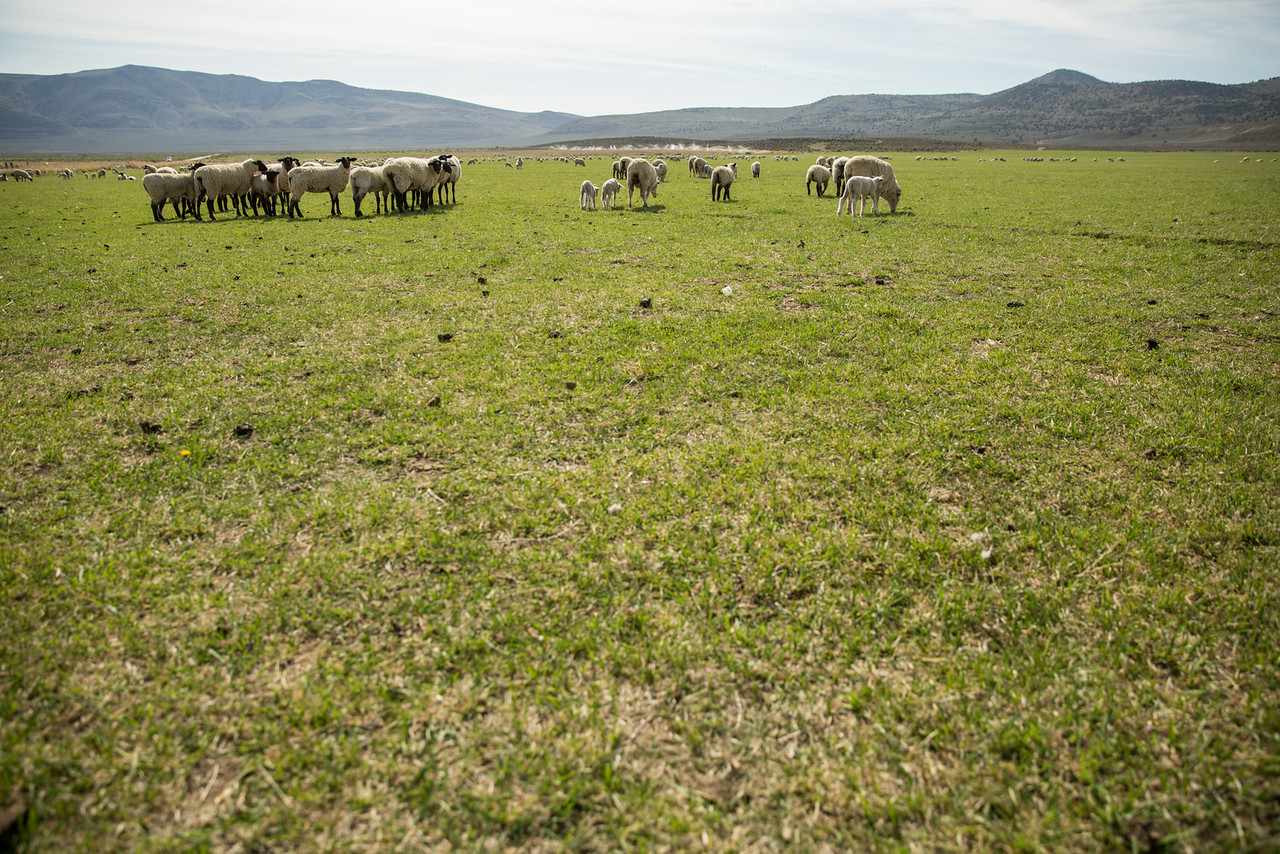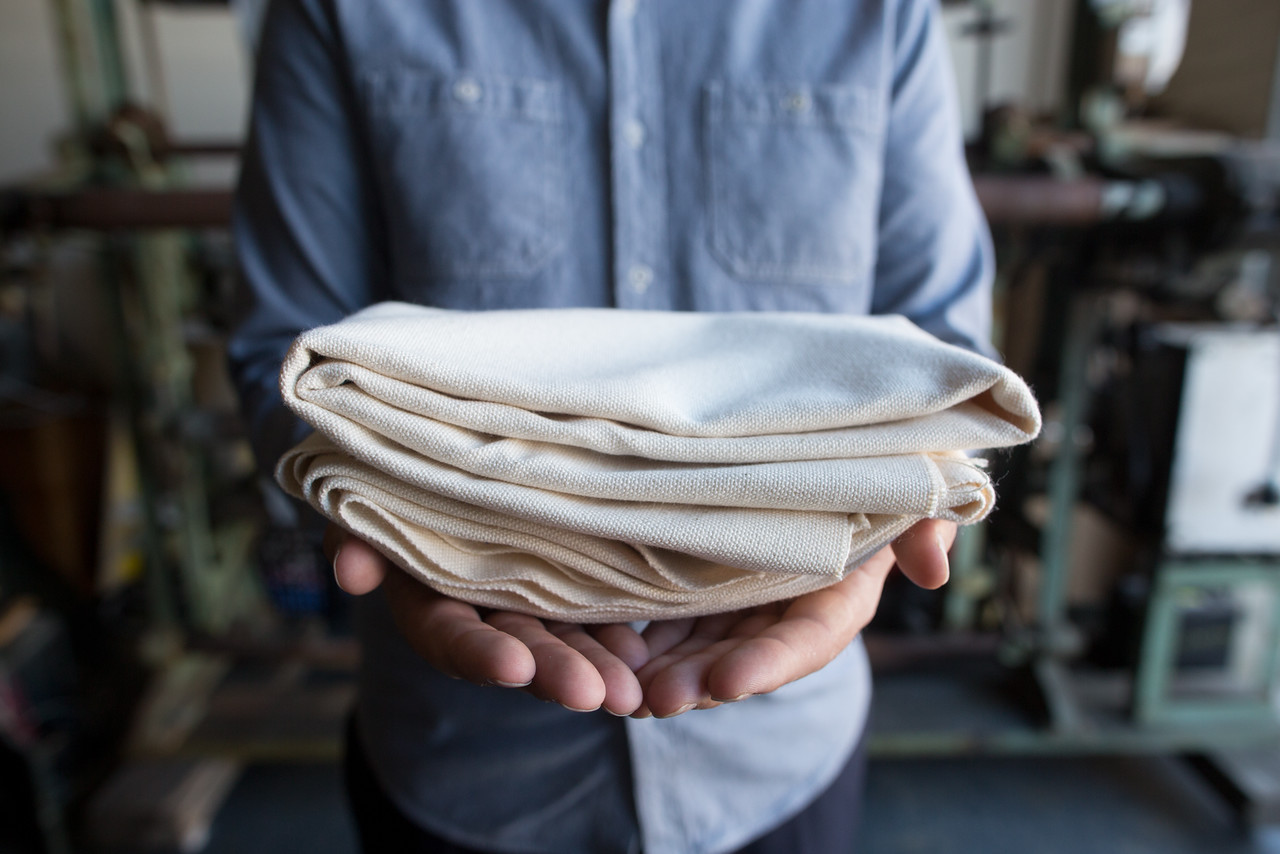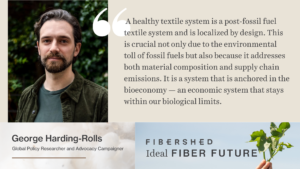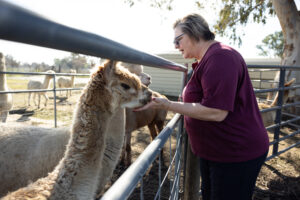Archived Project: Community Supported Cloth
Since the first Fibershed wardrobe initiative in 2011, we have looked to the soil and skills of our community to understand how to provide for our essential human need — clothing — while contributing to harmonizing the carbon cycle and investing in a thriving regional economy. As a community-based nonprofit organization, Fibershed has been dedicated to creating prototypes that tread the path for this very reality.
Reinventing supply chain development from the ground up, Community Supported Cloth began with a direct connection to the soil: Northern California Fibershed producer member Bare Ranch sought supply chain partners to support their shift in landscape management as part of the Climate Beneficial™ Wool program. With over 4500 acres on the home ranch alone, the Bare Ranch offers a potential positive impact for the betterment of our shared climate: when carbon farm plan implementation is complete, each pound of wool produced by Bare Ranch will offset the greenhouse gas footprint associated with production by six to nine times.
A shift in management practices, such as cultivating and applying compost, or plotting and planting a windbreak, is made possible through the combined investment of conservation grants and a price premium for each pound of Climate Beneficial Wool.
We wondered: might our community’s desire for local cloth serve as a lever of change in carbon stewardship at the landscape level?
Designed from Soil to Skin
Community Supported Cloth began with the willingness of Bare Ranch co-owner Lani Estill to explore alternatives to the international commodity wool market for their fine wool raised in the Surprise Valley of California. A portion of the Ranch’s 2016 wool shearing was sent to the following domestic supply chain partners:
- Chargeurs Wool, in Jamestown, North Carolina, where the raw wool was scoured (washed) to remove the dirt, plant matter, suint (sweaty salts), and lanolin (natural oil from the sheep). Charguers Wool is one of the few wool scouring operations left in the United States. After scouring, the wool fiber goes through an additional fine combing process that aligns all the longer fibers and removes most of the shorter fibers, referred to as noils. This additional process translates into a smoother textile surface and the ability to create a finer weight cloth.
- Jagger Brothers, in Springvale, Maine, received the combed top and spun it into a yarn capable of withstanding the high speeds and heavy tension of industrial weaving equipment. Commercial weaving yarns are described by number of strands (ply) and thickness (diameter), and in consulting with Jagger, a 2/24 yarn was produced with the hope that emerging West Coast milling partners will soon be able to fulfill this order.
- Huston Textile Co., in Rancho Cordova, California, wove the yarn into fabric using vintage American looms that are restored on site. An up-and-coming independent textile manufacturer run by Ryan Huston with a vision to develop high quality, small-batch textiles using natural fibers, Community Supported Cloth presented the first opportunity for Huston to collaborate directly with fiber producers in the Northern California Fibershed community.
Drawing together the threads of this supply chain, Fibershed facilitated Community Supported Cloth by connecting supply chain partners and supporting the costs and time investment of research and development, thanks in part to a USDA Value Added Products Grant. Textile sampling and woven structure advising were supported by Leslie Terzian of TangleBlue studios in San Francisco.

Powered by Community
Just like the first Community Supported Agriculture models used by food farmers, fiber producers need our support to bring ‘fresh carbon’ fabric to market.
Inspired by models of direct connectivity and upfront investment, Fibershed hosted Community Supported Cloth pre-sale reservations as a mode of aggregating demand and capitalizing the supply chain to the finish line. Beginning at the 2016 Wool Symposium with in-person orders, Fibershed invited community members to reserve a minimum of 2 yards of this novel, Climate Beneficial cloth, incorporating a 3% margin to reinvest directly in soil health building practices.
Over 100 buyers reserved between two and 175 yards of fabric, igniting not only the Community Supported Cloth supply chain, but a state change in reimagining how textiles flow through our community and impact our landscape and livelihoods.
From home sewing enthusiasts to high-end fashion designers, community members empowered Community Supported Cloth and exemplified the act of prosumption, moving beyond consumerism into direct engagement with the production of material culture.
One look at #CommunitySupportedCloth on social media shows the myriad ways prosumers are co-creating regional, regenerative fiber systems through this model.

Seeding the Path to Climate Beneficial Fashion:
Community Supported Cloth brought to life regionally grown and woven fabric production, and with it, the opportunity for designers to engage in Climate Beneficial design. At the 2017 Climate Beneficial Fashion Gala, designers and artisans from the Northern California Fibershed and greater West Coast community created runway looks using materials sourced from producers participating in the Climate Beneficial program. Community Supported Cloth provided a woven textile that was crafted into a range of garments from shift dresses to tailored jackets.
Nourishing Economic Opportunities:
By prototyping a textile from raw wool to finished fabric and demonstrating demand for Climate Beneficial cloth, the Community Supported Cloth model opened the pathway for rancher Lani Estill to continue producing value-added goods under the Lani’s Lana line. Those who wish to purchase retail or wholesale quantities of cloth can visit the Lani’s Lana online shop.
Local retail shops also offer now offer Climate Beneficial cloth from the second production line, directly to consumers at A Verb for Keeping Warm’s Oakland shop and online. Community Supported Cloth also fortified Huston Textile Company’s foray into Climate Beneficial fabric, aiding in strategic business planning and capital investment for regenerative textile production.
As a pilot supply chain, Community Supported Cloth also provided a case study for examining economic models for contributing to conservation practices. Analyzed and summarized in Growing Value for Wool Growers, the pre-sale model provides direct producer-consumer connection and investment toward carbon farming.
Prototyping Possibilities:
A woven textile incorporates vertical yarn (warp) and horizontal yarns (weft) to create a structure of interlocking strands. After the Community Supported Cloth was woven, a length of leftover warp remained on the loom at Huston Textile Company, and Fibershed used this as an opportunity to explore additional regional fabric constructions. Coordinating yarn delivery and cloth production, Community Weft cloth showcased explorations in textile weight and fiber pairings from Northern California Fibershed producer members.
Farther afield, communities within the Fibershed Affiliate Program observed Community Supported Cloth as a model for reinvigorating regional production in their home communities. In fall 2018, the South West England Fibreshed will launch, in collaboration with Bristol Textile Quarter, a similar community-powered pre-sale program to support production of Bristol Cloth, a textile that speaks to place and the possibility of local fiber systems.
(Photos by Paige Green)



